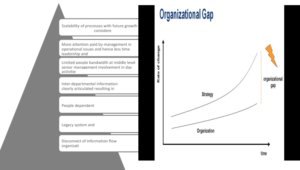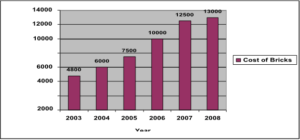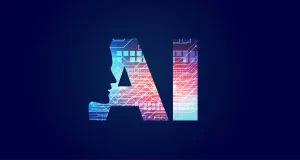Based on McKinsey’s research, the global construction industry has grown only 1% per year over the past few decades in comparison to 3.6% for the manufacturing industry and 2.8% for the entire world economy. Productivity or the total economic output per worker has grown 1500% in manufacturing, retail, and agriculture since 1945 while that of the construction industry has remained flat, even though about 7% of the world’s labor force is employed in the construction industry making it a major sector of the world economy. One of the major reasons for this lack of growth is that the construction industry even in times of this digital era under-digitized in the world and is the slowest to adopt new technologies for its projects.
While switching to the latest technologies and automation might look bizarre at the beginning for an industry like construction, but Machine Learning (ML) and Artificial Intelligence (AI) are making the job site safer and more efficient thereby saving big on the overall costing. While AI has amalgamated in other industries well, it has only started to seep into the AEC industry.
Artificial Intelligence and Machine Learning
AI is a clustered term used for describing a situation when a machine imitates human cognitive functions like that of pattern recognition, problem-solving, and learning, while ML is only a subset of AI. Machine learning as the term suggests uses statistical techniques to enable the computer systems with the ability to learn from the resources or data available without explicitly being programmed. With this, a machine will become better at understanding and delivering insights as and when it is revealed more data.
The applications of AI and ML are humongous in the construction industry and to a bim services consulting company. From streamlining project management to automating the design process, the AEC industry can utilize AI tools to make their work easier. While the applications of ML would make sense as you get deeper into your workflow but generally AI would provide automation tools that would help solve problems, uncover insights along with working more smartly and efficiently thereby boosting overall performance. From having intelligent machines to auto-generate customer quotes to smart hats that capture 3D models in real-time there are numerous ways one can use AI for their growth.
Benefits of Artificial Intelligence to the Construction Industry
- Automating Project Planning: The construction industry has come from a time when builders have spent weeks designing a manual model. While planning might be the most critical aspect for a building project, taking a lot of time in developing the initial plan might make the potential customer lose its interest and trust, finally losing that big project. But now AI comes handy to plan for an upcoming project quickly based on recorded data. Companies can now use robots to autonomously get 3D scans of construction sites along with data from the past project being fed into a computer system that can analyze dimensions, material, location, and cost in real-time. Along with this, it can even identify if there are any hassles or issues at the site which need to be taken care of before they become major problems. AI technique ‘reinforcement learning’ will be used by algorithms of the future that learn based on trial and error. Besides, it also has the power to assess multiple alternatives and combinations based on similar projects. Due to such analysis and learning capabilities, it helps in efficient project planning as it brings out the best route and corrections to itself over time.
- Improved Design through Generative Design: BIM being a collaborative 3D model-based approach involving every stakeholder to bring about the efficient planning, designing, construction, and management of the building. BIM needs to be clash-free and appropriate for a project’s success. These 3D models take into consideration the different departments like that of structural, architectural, engineering and MEP plans along with their proper timeline of activities. So, the main challenge is to see that there are no clashes between any of these departments and their elements. The AEC industry is now switching to machine learning in the form of generative design to find and mitigate any clashes between the different models developed by these teams. This is done in the planning and designing phase itself so there are no reworks at the construction site. There is now software that uses machine learning to scout all the possibilities of a solution and creates design alternatives. It implies machine learning to generate 3D models of electrical, mechanical, and plumbing systems along with making sure that the MEP systems route does not interfere with the architecture of the building. In this process, it learns from each iteration to come up with an ideal solution.
- Safe Sites: As much as five times more labor is lost during a construction work than any other industry’s labor and so the safety of these labor and the site is of the most important at the site. Some of the leading causes for deaths at the construction site observed were electrocution, falls, caught-in, and followed by or struck by an object. With the use of AI, the software is created which would analyze the job site from the site images and scans the site for safety hazards, for example when a worker is not wearing protective equipment it will then correlate the images with its accident records. This algorithm has the potential of computing risk ratings for projects and will hold safety briefings when it detects a potential threat.
- Risk Reduction: Every construction project brings with itself some risk factors which could be any one of safety, quality, cost, and time. The bigger the project the bigger would be the risk as it involves multiple subcontractors and a team that would work on different domains parallel on job sites. Now the general contractors can use AI and machine learning solutions to monitor and categorize risk on the job site so that the teams can pay heed to the riskiest areas first. AI comes to use for giving priority to these issues. Subcontractors and their work are given ratings based on a risk score so that construction managers can work intimately with high-risk teams to remove or reduce it completely.
- Labor Shortage: Due to a shortage of labor and an innate need to boost the construction industry’s low productivity construction companies and design consulting firms are pushing forward to invest in Artificial Intelligence and Data Science. The productivity can be boosted by almost 50% through real-time analysis as reported by McKinsey in 2017. Construction firms are molding themselves to use machine learning and AI to plan machinery and distribution of labor across jobs. There will be a robot employed constantly to assess job progress and the location of the workers and equipment. This feature enables the project manager to identify which job has appropriate workers and equipment to keep the project on schedule and meet the deadline along with identifying which areas need more labor for completion of certain work. The experts suggest that construction robots will soon become more intelligent and autonomous with AI techniques.
- Productive and Efficient Construction Site: With machine learning and robot companies are starting to use self-driving construction machinery to conduct repetitive tasks like bricklaying, pouring concrete, demolition, and welding which would be more efficient than the human counterparts. Autonomous or semi-autonomous bulldozers are performing excavation and prep work with the help of human programmers to prepare a construction site as per exact specifications. Such a force will free up man-workers from the construction work itself thereby reducing the overall time needed to finish the project successfully. In addition to this, project managers and teams can keep track of job sites in real-time with the usage of onsite cameras, facial recognition, and other technologies to gauge the productivity of their workers and their conformance to following norms and procedures.
- Construction Off-Site: Prefabrication and Modularisation are trending for the construction industry and so the firms are now relying on off-site factories. These factories have autonomous robots as their staff which piece together components of a building that are then put together by human workers on-site construction. In this way structures like walls can be finished in assembly-line style by the autonomous machinery more efficiently in comparison to the human workers for that job so that they are left to complete the detailed work like HVAC, Plumbing, and electrical systems when the structure is fitted together.
- Cost Overruns are Saved: Most mega construction projects go over budget due to several tasks like managing multiple teams, dealing with suppliers, hiring subcontractors, material, etc, and so AI tools come as an aid to control the overall costing of the project. Machine learning could be used to analyze complex projects and find variables that may cause issues in the project. AI tools like Artificial Neural Networks are being used to predict cost overruns which are based on contract type, project size, and competence level of the project managers. Past data such as start date and end date help predict the realistic timeline for future projects apart from material cost and other variables of interest. This information allows one to adjust project workflows based on importance when tackling complicated project designs. AI also helps the staff to access real-life training material that will benefit them to enhance their skills and knowledge more quickly and efficiently. This will reduce the time taken to bring about new resources onto the project, thereby speeding the delivery project and improvising the budget.
- Big Data and AI: This is a generation where data is everything and a massive amount of data is being created on an everyday basis. With this, the AI systems are being exposed to enormous data to learn from and be better each day. In the construction arena, every job site and project will become a potential data source for Artificial Intelligence. Data gathered from drone videos, images from mobile devices, BIM services, security sensors, and varied others have become a pool of information. This big data brings an opportunity for construction professionals and customers to analyze and benefit from the insights developed.
- Post-Construction: After the construction of the building is completed the building managers can use AI for maintenance of their infrastructure. BIM modeling services hold a lot of information about the structure of the building which can be combined with AI to monitor developing problems and come up with solutions to prevent those issues in time.
With the buzz of artificial intelligence and digitizing the construction industry, there is a fear of bringing about unemployment mongering with it. But it is important to note that even though highly efficient, machines can only perform the task they are programmed for and not 1% beyond it. Machines will never get better with an experience like humans even though they rely on machine learning capabilities. Creativity and out of the box thinking are a boon only for humans by nature, so AI will only aid mankind by bettering them in their job by sharing the workload and making them faster. The future of the AEC industry with AI, the Internet of Things (IoT), and robotics will see a 20% reduction in the overall costing. So, the construction companies must prioritize investing in the areas of AI to leverage their company’s impact and uniqueness. Early adopters of AI and ML technologies in their workflow will set the direction of this industry to bring benefits for their clients in the short and long term.






